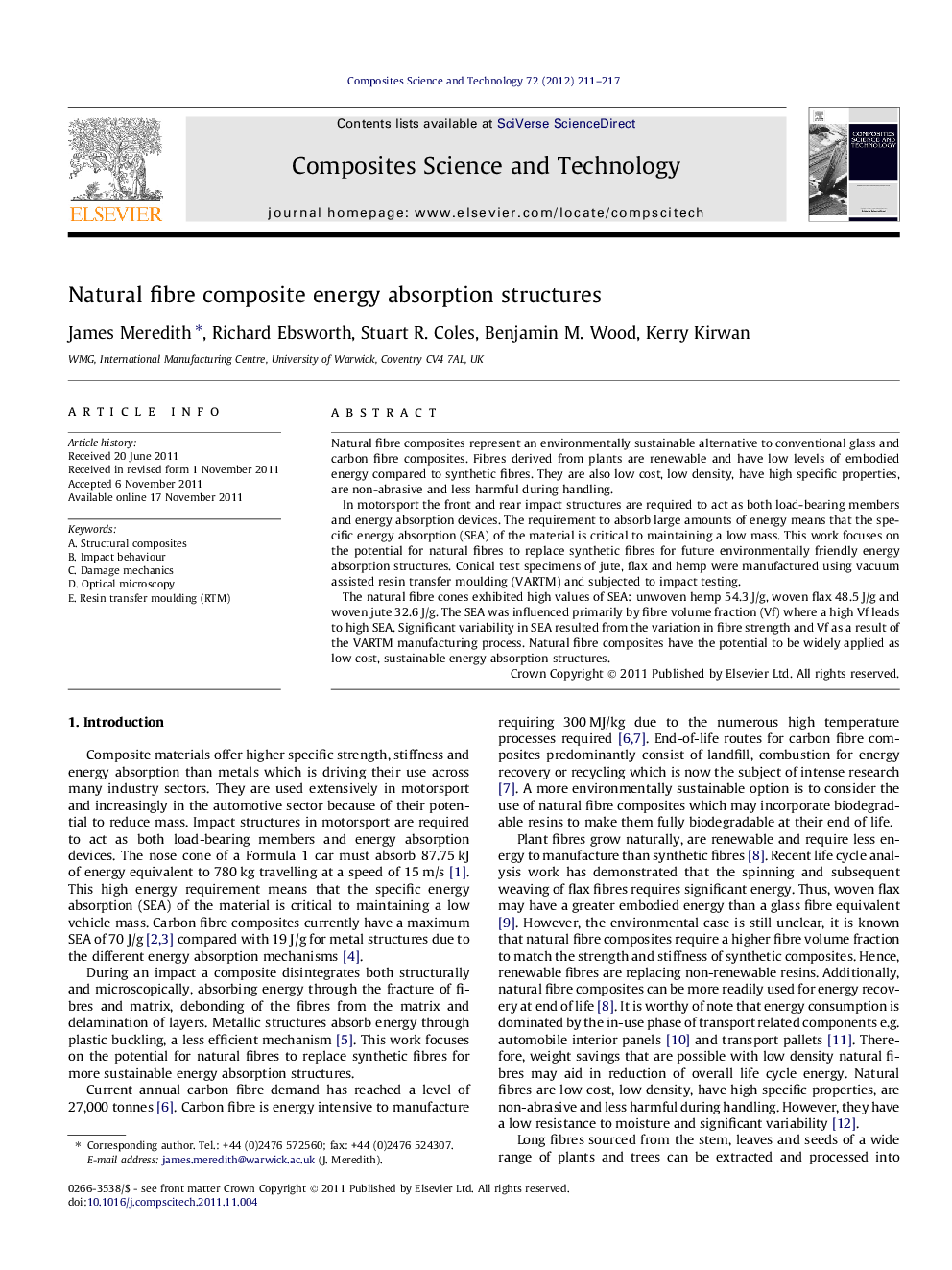| کد مقاله | کد نشریه | سال انتشار | مقاله انگلیسی | نسخه تمام متن |
|---|---|---|---|---|
| 820857 | 906728 | 2012 | 7 صفحه PDF | دانلود رایگان |

Natural fibre composites represent an environmentally sustainable alternative to conventional glass and carbon fibre composites. Fibres derived from plants are renewable and have low levels of embodied energy compared to synthetic fibres. They are also low cost, low density, have high specific properties, are non-abrasive and less harmful during handling.In motorsport the front and rear impact structures are required to act as both load-bearing members and energy absorption devices. The requirement to absorb large amounts of energy means that the specific energy absorption (SEA) of the material is critical to maintaining a low mass. This work focuses on the potential for natural fibres to replace synthetic fibres for future environmentally friendly energy absorption structures. Conical test specimens of jute, flax and hemp were manufactured using vacuum assisted resin transfer moulding (VARTM) and subjected to impact testing.The natural fibre cones exhibited high values of SEA: unwoven hemp 54.3 J/g, woven flax 48.5 J/g and woven jute 32.6 J/g. The SEA was influenced primarily by fibre volume fraction (Vf) where a high Vf leads to high SEA. Significant variability in SEA resulted from the variation in fibre strength and Vf as a result of the VARTM manufacturing process. Natural fibre composites have the potential to be widely applied as low cost, sustainable energy absorption structures.
Journal: Composites Science and Technology - Volume 72, Issue 2, 18 January 2012, Pages 211–217